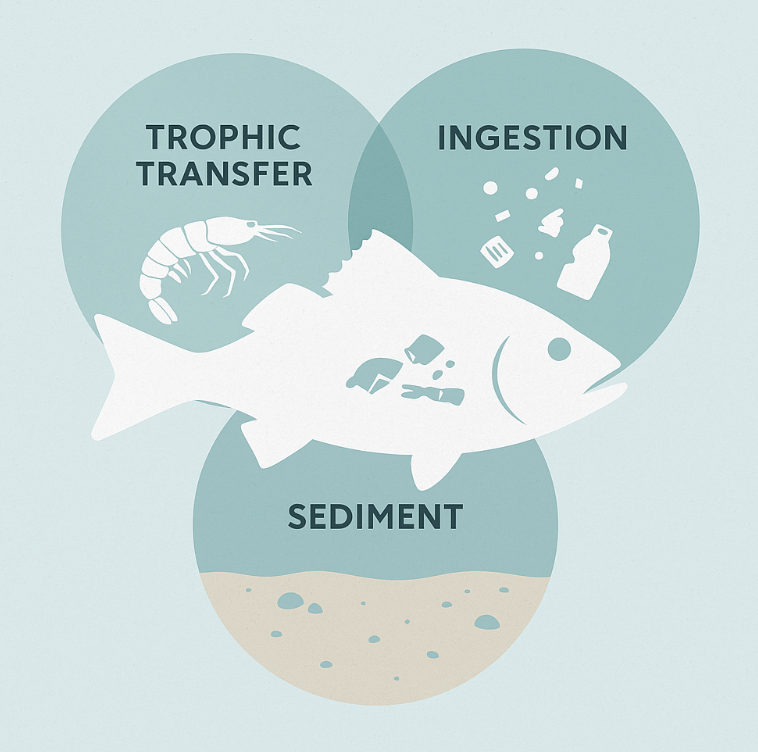How is Seatopia's seafood cleaner than other seafood when it comes to microplastics?Updated 7 months ago
Unfortunately microplastics are everywhere. They have been found in:
- Ocean and freshwater ecosystems (from the surface to the deep-sea sediment)
- Wild-caught seafood (including fish, shellfish, and even sea salt)
- The air we breathe
- Rainwater
- Soil and agricultural runoff
Microplastics get into seafood primarily through ingestion and trophic transfer. Here are the primary ways microplastics end up in seafood:
Direct ingestion: Fish often mistake microplastics (tiny plastic particles under 5mm) for food, especially when the plastics resemble prey like plankton or fish eggs. This happens near the ocean surface, on the seafloor, and even in freshwater environments.
Trophic transfer: Microplastics can also move up the food chain. Smaller organisms like zooplankton or shrimp eat microplastics, and when fish eat those smaller organisms, they ingest the plastics too.
Water contamination: Fish can also absorb chemical additives or pollutants that stick to microplastics, even if they don’t eat the plastic itself. These chemicals can leach into the fish’s tissues over time.
Habitat contamination: Bottom-dwelling (benthic) fish are particularly vulnerable because microplastics often settle into sediment, where they forage for food.

In the wild, fish are exposed to microplastics by directly ingesting them—often mistaking them for food—or by consuming smaller organisms that have already ingested plastic, a process known as trophic transfer. Microplastics also accumulate in sediments, making bottom-feeding species especially vulnerable.
Seatopia seafood is raised in clean, land-based or offshore systems by partner farms and are fed a carefully controlled diet. Because they aren’t foraging for baitfish or filter-feeding in contaminated waters, they do not bioaccumulate microplastics in the same way their wild-caught counterparts can.
Seatopia lab tests our seafood to ensure that it is mercury safe and free from detectable microplastics. You can learn more about our testing commitment here. Zero detectable microplastics means that no microplastic particles were found at or above the method's Limit of Detection (LOD), Seatopia’s current quantitation limit of 0.009 particles per gram.